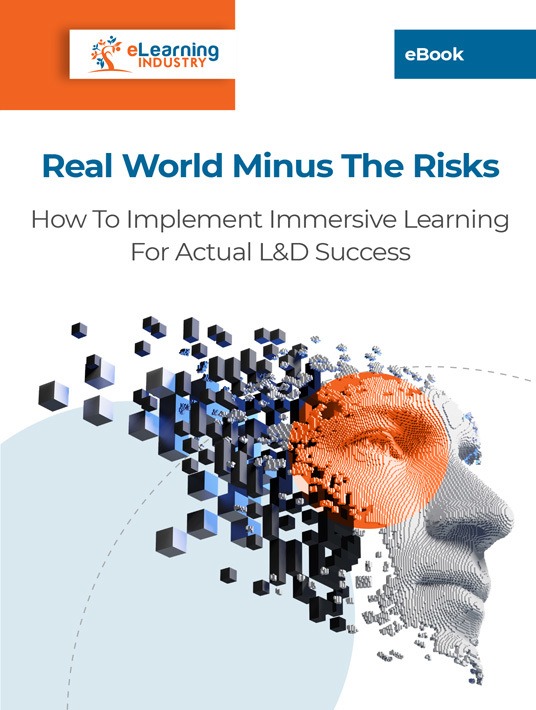AR Training And BYOD Techniques To Stay In Budget
BYOD (Bring Your Own Device) is all the rage these days. It has accounting and L&D departments alike singing its praises. This is a rarity, given that these two teams are usually at odds. While one wants to achieve the online training initiatives, the other is holding on tight to the company purse strings. But BYOD benefits everyone involved, including employees who get to use their preferred mobile gear. But how do you implement this approach in your AR training program? After all, you can’t cater to every smartphone or tablet, and technology needs to facilitate employee development instead of becoming a distraction. Here are 7 tips to cut immersive learning costs with BYOD and reusable assets.

1. Provide A List Of Recommended Devices
Employees must know which devices are acceptable for AR training. Namely, which smartphones and tablets are supported and how they can use them to access essential JIT tools. Compile a list of your BYOD gear suggestions, including VR headsets if you are taking that route. However, employees probably won’t pay for their own VR gadgets if its solely for online training purposes. Get the employees' input regarding their accessibility preferences to custom tailor your AR content.
2. Set Mobile Accessibility Guidelines
It’s best to set some ground rules before you invite employees to bring their own so that everyone understands the goals and online training objectives. Otherwise, BYOD might lead to even more workplace distractions. Make employees aware of the apps and sites they should avoid while on the job. For example, they shouldn’t spend half an hour chatting with friends on social media while customers are waiting to be helped. AR training is there to offer on-the-spot support and expand their knowledge. It’s their responsibility to make the most of the online training resources available, but they may require some guidance like how to avoid common tech distractions and focus on the online training tasks.
3. Welcome Employee Contributions
Encourage employees to develop their own online training resources, then add AR elements to cut L&D costs. They can even contribute stories or anecdotes you can use as the basis for your next branching scenario or game. They’ve lived through unique challenges that can benefit their peers. So, draw on them for inspiration to stretch your budget and get them actively involved in online training content development. Another way to welcome their contribution is to host AR previewing sessions. Invite a handful of employees to try out the new online training activity, then let them offer their eLearning feedback. Encourage them to offer personal insights and recommendations that can help you improve relatability.
4. Repurpose Outdated Online Training Resources
Reuse assets you already have to reduce spending and enrich your BYOD Augmented Reality training library. One of the most common misconceptions about AR training is that you need a big budget to pull it off. However, you can repurpose existing online training resources with the help of a rapid eLearning authoring tool and a multimedia online training library. Some platforms feature eLearning templates, interactions, and other "short cuts" to deliver immersive learning for less. It’s wise to do an asset inventory beforehand from an AR point of view. For example, make some minor modifications to a compliance eLearning infographic and add it to the AR overlay for JIT support.
5. Choose A Responsive LMS
Spending money now could actually help you save in the long run. Such as investing in a responsive LMS that breaks down accessibility barriers and delivers an optimal online training experience for everyone. Responsive systems take the mobile-first approach, which makes them ideal for immersive learning on the go. Test drive a few platforms to get the best value for money and maximize functionality.
6. Track And Revise
Under-performing AR training activities can quickly drain resources. If you still maintain them, they might diminish the real-world value of your L&D curriculum. Use LMS metrics to measure efficacy via employee engagement, online training assessment results, and practical application. Then fine-tune the online training content when necessary to achieve the best results. For example, one of your AR product knowledge games isn’t getting much love these days. Further analysis reveals that it’s outdated and out of touch with modern learners. A few minor changes can give it a new lease on life and help you boost employee participation and knowledge retention.
7. Outsource To An eLearning Content Provider
Companies usually avoid outsourcing when they’re trying to cut costs because they assume it’s too expensive and that they can handle the corporate eLearning project in-house for less and achieve the same results. However, investing in an eLearning content provider can help you drastically reduce AR training spending and expedite the timeline. Consider all the tools, payroll, and hiring expenses that go into eLearning content development. For example, you may need to hire IT experts, SMEs, and graphic designers to create new online training resources. eLearning outsourcing eliminates most of these expenses because the company already has the necessary tools and expertise. They can also develop and deploy online training content more quickly to meet upcoming deadlines such as new product launches or compliance policy changes.
Bring Your Own Device doesn’t necessarily mean that your organization is free and clear. If you’re offering AR and VR training content, you should make some devices available for those who are unable to provide their own. Every member of the team deserves equal opportunities when it comes to online training support and gap bridging. Not just those who can afford the latest and greatest tech. Which brings me to my last point. Make certain that your AR training is inclusive and that you don’t just cater to the most recent smartphones or tablets when designing your online training content or choosing suitable LMS solutions.
A Mixed Reality training strategy doesn’t have to drain your organization’s resources or make you go over budget. Download the eBook Real World Minus The Risks: How To Implement Immersive Learning For Actual L&D Success, and discover how you can benefit from incorporating immersive learning into your online training program. Provide an engaging training experience and boost your employees’ confidence with a Mixed Reality training solution.









